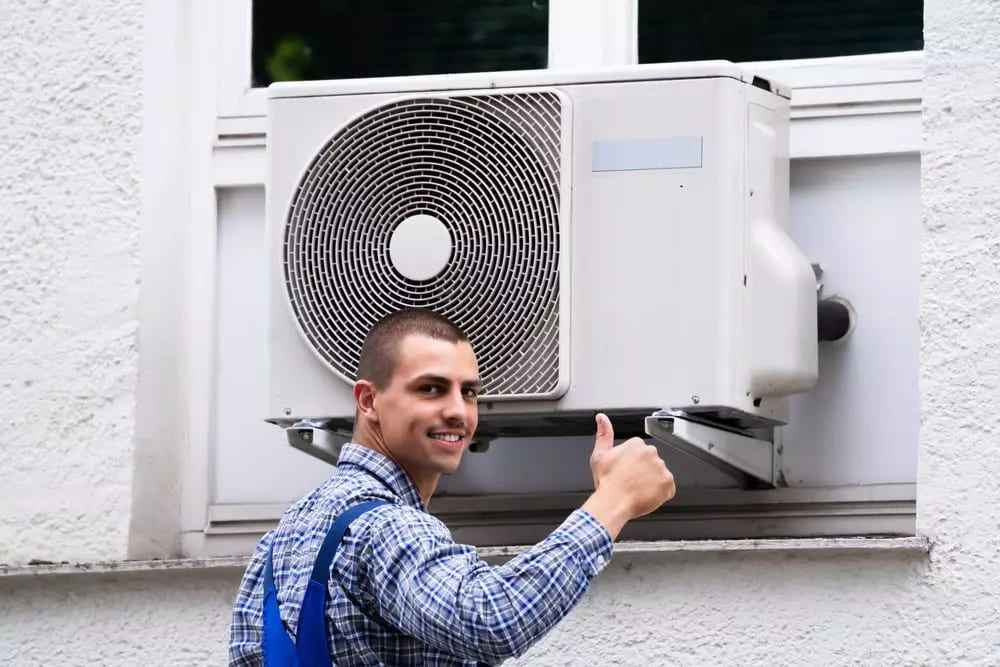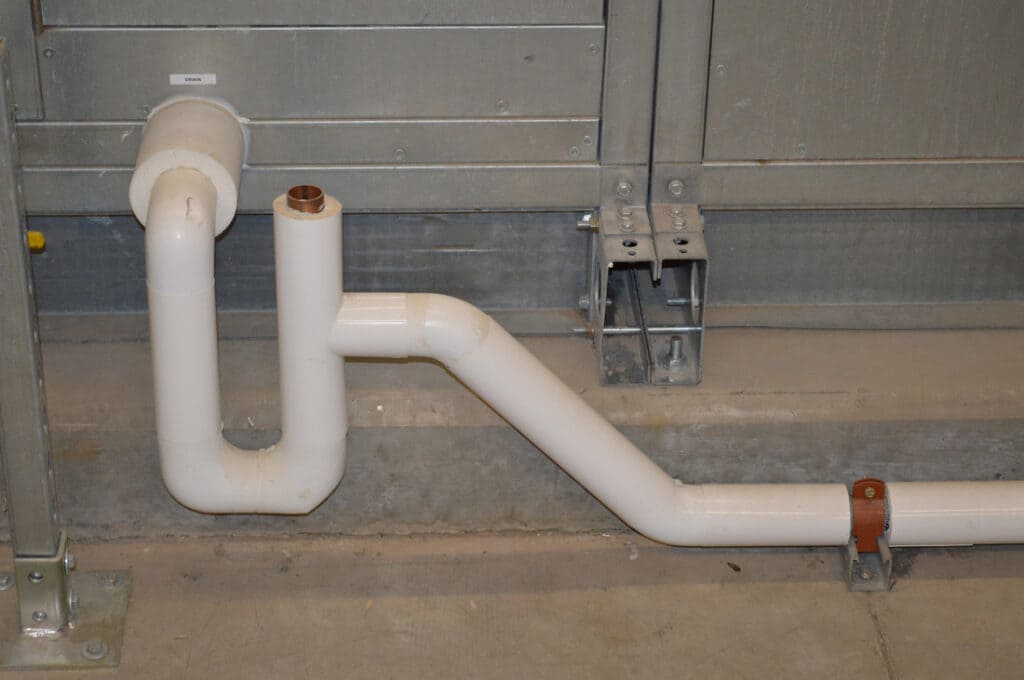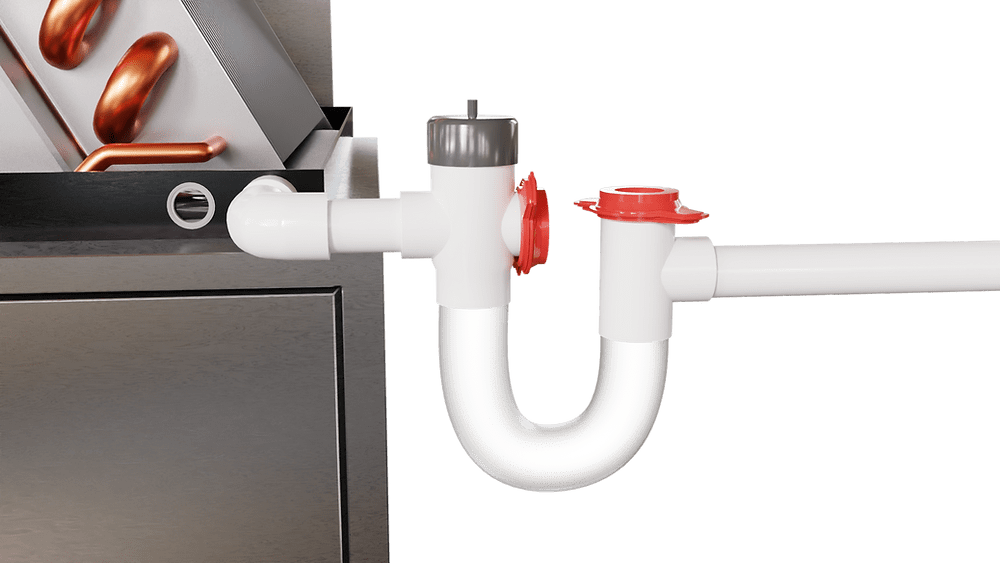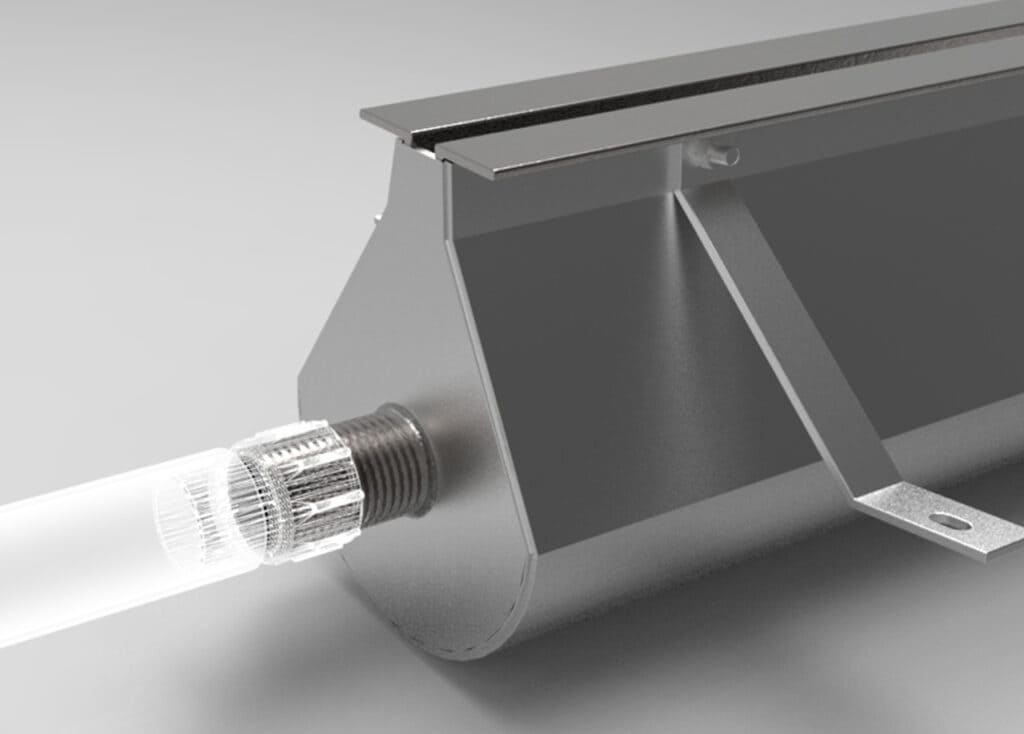Table of Contents
One of the most important parts of air conditioning maintenance is cleaning the AC drain line, which can help save water damage and increase system performance. Algae, mold, and other debris can plug the drain line over time, causing leaks and poor air conditioning effectiveness. Here’s a step-by-step tutorial on how to properly clean your AC drain line:
before going to the step by step guide fro the ac drain line cleaning lets have a quick look on why AC Unit Freezes Up , for this issue here are the Quick Fixes for Frozen Air Conditioning Units

1.Safety first:
The most important guideline to follow while performing any maintenance on your air conditioner is “Safety First.” Ensuring the electricity is cut off is an essential initial action. Turning off the power at the thermostat and then going to the breaker box to shut off the matching breaker are crucial steps in this process. You can operate in a safe atmosphere knowing that all electrical currents to the machine are stopped due to this double step.
Examine the access point to your air conditioning machine as soon as the power is safely turned off. It is essential to ensure obvious and safe access, whether it’s an outdoor compressor or an inside central unit. Clear away any objects, tools, or debris that could get in the way of your work area or path. This improves efficiency in the maintenance process while also contributing to safety.
Sometimes, cleaning the unit becomes an integral part of your usual maintenance. A wet-dry vacuum can be handy in this situation, mainly when working with an outside unit. Outdoor units are vulnerable to debris, leaves, and occasionally even water buildup. The efficient removal of water and debris from the unit by a wet-dry vacuum can stop mold growth and guarantee optimal system performance.
Keep in mind that maintenance activities can vary in complexity. While simple tasks like cleaning and filter changes are doable, more complicated problems must be handled by an expert. Your first concern should always be safety, and you should seek advice from or use a professional specialist if a task seems beyond your level of expertise. This method guarantees that your air conditioning machine stays in top shape, offering efficiency and comfort without sacrificing safety.

2. Locate the AC Drain Line
Maintaining the drain line of your air conditioning (AC) system is imperative to guarantee optimal performance, particularly in the summer months. The condensate drain line sometimes referred to as this line is essential for draining the condensation that your air conditioner’s evaporator coil produces. Identifying and cleaning your AC drain pipe can be done as follows:
Find the AC Drain Line:
The drain line exit of your AC system is usually located close to the outside unit. Typically, a PVC pipe transports moisture away from the air conditioner and runs from your inside unit to the exterior.
Access the Drain Pan:
The indoor air handler unit is often located beneath the drain pan in your house. Look for standing water in this region, as it may indicate a blockage in the drain line.
How to Clean AC Drain Line:
Your AC has to have its drain cleaned if you find any water or blockages in the drain pan. To ensure safety, switch off the power to your air conditioning system first. Any blockage from the outside end of the drain line may be attempted to be removed with a wet/dry vacuum. To achieve a deeper cleaning, use a vinegar and water mixture to flush the line. This will assist in dissolving any mold or algae accumulated inside the pipe.
It is imperative that you perform routine maintenance on the condensate drain line to keep your AC system efficient and prevent water damage. By learning how to clean the drain line, you can ensure that your air conditioner functions properly and maintains a comfortable temperature in your house during the summer.

3. Inspect and Clean the Drain Line
Maintaining the longevity and effectiveness of your air conditioning system requires routine maintenance. Cleaning and examining the AC drain pipe is a crucial step sometimes missed. This is crucial since a clogged AC drain line can result in water damage, increased interior humidity, and even a negative impact on air quality. Here’s a more thorough method for maintaining the functionality and clarity of your AC drain line:
Visual Inspection:
To start, find the drain line’s departure point outside your house. Usually, this is a PVC pipe that comes from your air conditioner. Examine this area for any apparent indications of obstruction or debris buildup. Water collecting at the unit’s base or an odd smell emanating from the drain line area are common signs that your AC drain line is clogged.
Eliminate Clogs Near the Exit:
Dirt leaves and occasionally insects can accumulate at the end of the drain pipe, causing clogs to form there. Clear the obstruction with a wet/dry vacuum if it is reachable. To increase the suction power, ensure the connecting site is well sealed with your hand or a cloth. This approach is incredibly efficient and can spare you more difficult upkeep duties.
Clean the AC drain line regularly:
Preventative maintenance can help avoid the hassle of clearing a blocked drain line. Regularly cleaning the line with a vinegar and water mixture can help prevent the growth of mold and algae, which are frequently the cause of blockages. Installing a drain line brush or other comparable cleaning instrument can also help keep the line clear with little work.
By doing these things, you can help prevent damage to your home and ensure that your air conditioning system operates efficiently. A clean AC drain line results in a more comfortable, healthy living space and less anxiety about unplanned repairs.

4.Flush the Drain Line
In particular, when the drain line is clogged, a thorough approach can help maintain and clean your refrigerator’s or air conditioner’s drain lines. Using a homemade treatment, you can guarantee the longevity of your PVC pipes while simultaneously addressing the problem with the least negative environmental impact. The following instructions will help you flush the drain line effectively:
Make a Vinegar Solution First:
To start, make a mixture with equal parts white vinegar and warm water. Vinegar may be a preference for some because of its powerful cleaning abilities, but it is safer for PVC pipes and the environment. This natural approach effectively removes the tenacious deposit that frequently clogs drain pipes.
Find the Access Point:
Locating the access point is essential. Usually, a PVC cap secures a T-shaped vent on the drain line. Remove this cover carefully so that the line is accessible.
Transfer the Fix:
Remove the cover and slowly add the vinegar solution to the access point. If mold, mildew, or algae have settled inside your drain lines, this mixture is excellent at dissolving them. Vinegar’s inherent acidity makes it a good cleaning agent.
Let It Sit:
Letting the solution do its job for a while after pouring is imperative. Give the solution time to settle at least thirty minutes. It takes this long for the vinegar to get inside and kill the growths, which guarantees a complete cleaning.
Finish With Water Flush:
The line must be finished with water to remove any leftover solution and loosening debris. To ensure a clear route and reduce the possibility of spillage, gradually pour water into the drain line using a funnel. This will ensure the process goes smoothly.
5. Maintenance Tips
Keeping your air conditioner’s drain clean is essential to ensure optimal performance and avoid water damage to your house. Routine inspections are one of the most crucial maintenance advice, particularly during the cooling season. Every few months, it’s a good idea to check and clean the AC drain line to avoid buildup and obstructions, which can result in ineffective cooling and possible water leaks.
Another essential step in maintaining the efficiency of your air conditioning system is annual servicing. Hiring a qualified HVAC specialist to service your air conditioning system once a year is essential. The drain line should be thoroughly maintained as part of this service to ensure it is clear of obstructions and operating as intended. To ensure that extra water may flow quickly away from your property, the expert performing this service will probably cleanse the pipe to remove debris.
Maintaining the longevity and effectiveness of your air conditioning system requires cleaning the AC drain line and getting rid of apparent debris. Flushing the line regularly helps stop the growth of mold and algae, which can seriously clog the pipe and cause water damage. You can keep the drain line of your air conditioner clean and ensure optimal system performance without dealing with water damage and expensive repairs by following these maintenance suggestions, including routine checks and yearly professional services.
